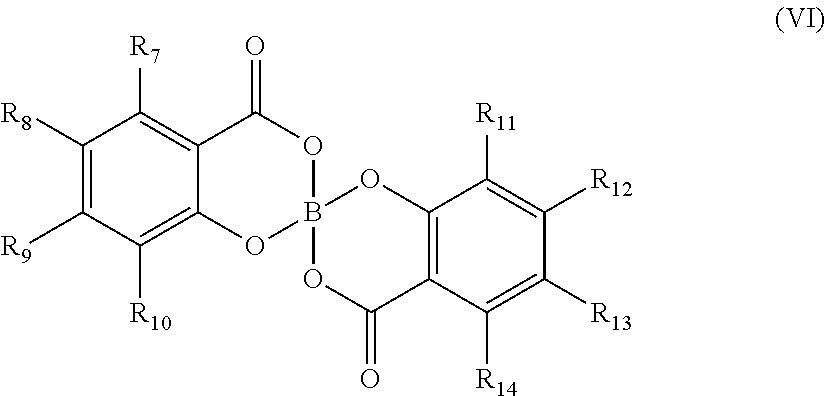Curable composition, lithographic printing plate precursor, method for producing lithographic printing plate, and compound
a technology of lithographic printing plate and compound, which is applied in the direction of lithography, photomechanical equipment, instruments, etc., can solve the problems of poor inability to sufficiently inspect the plate, and degrade the development ability of the machine, so as to achieve excellent on-machine developmentability, and favorable thermal and temporal stability
- Summary
- Abstract
- Description
- Claims
- Application Information
AI Technical Summary
Benefits of technology
Problems solved by technology
Method used
Image
Examples
synthesis example 1
nd 1
[0518](Synthesis of Intermediate SM-5)
[0519]The synthesis scheme of an intermediate SM-5 will be illustrated below.
[0520]5-Methyl-2,3,3-trimethylindolenine (SM-1) (2172 g, 1.12 mol) and 3-methoxypropyl tosylate (SM-2) (305.7 g, 1-25 mol) were added to a 3 L three-neck flask and stirred at 120° C. for 3.5 hours, thereby obtaining an intermediate SM-3. This reaction liquid was cooled to 60° C., and then isopropanol (976.3 g) was added thereto and stirred at 40° C., Furthermore, SM-4 (265.0 g, 0.50 mol) and an acetic anhydride (127.8 g, 1.25 mol) were added thereto. After triethylamine (316.6 g, 3.13 mol) was added dropwise (hereto and stirred at 80° C. for two hours. This reaction liquid was cooled to 5° C., and distilled water (500 g) was added thereto and stirred for one hour. The precipitated solid was collected by filtration, washed with distilled water (1,000 g), and then dried in an air blast dryer set to 50° C. for eight hours, thereby obtaining an intermediate SM-5 (336.4 ...
synthesis example 2
nd 2
[0529]
[0530]The intermediate SM-6 (2.23 g, 0.004 mol) and methanol (20 ml) were added to a 100 L three-neck flask, and, furthermore, a 50% by mass aqueous solution of sodium hydroxide (0.32 g, 0.008 mol) was added thereto and stirred for 30 minutes, thereby dissolving SM-6. Next SM-7 foal could be synthesized using a well-known method (1.34 g, 0.002 mol) was added thereto and dissolved. Wider (10 ml) was added thereto and stirred for one hour. After that foe precipitated solid was collected by filtration, washed with distilled water (20 g), and dried at room temperature, thereby obtaining a compound 2 (1.8 g, 0.0019 mol).
[0531]The structure of the obtained compound 2 was identified by NMR. The identification result will be described below.
[0532]1H-NMR (400 MHz, heavy dimethyl sulfoxide) δ=0.85 (m, 3H), 1.17-1.4 (m, 10H), 1.67 (m, 2H), 3.16 (d, 4H), 3.85 (s, 3H), 3.90-4.00 (m, δH), 4.10 (q, 4H), 6.44 (s, 2H), 6.98 (d, 2H), 7.39 (m, 2H), 7.55 (m, 2H), 7.76 (d, 2H), 7.82 (d, 2H)
PUM
 Login to View More
Login to View More Abstract
Description
Claims
Application Information
 Login to View More
Login to View More - R&D
- Intellectual Property
- Life Sciences
- Materials
- Tech Scout
- Unparalleled Data Quality
- Higher Quality Content
- 60% Fewer Hallucinations
Browse by: Latest US Patents, China's latest patents, Technical Efficacy Thesaurus, Application Domain, Technology Topic, Popular Technical Reports.
© 2025 PatSnap. All rights reserved.Legal|Privacy policy|Modern Slavery Act Transparency Statement|Sitemap|About US| Contact US: help@patsnap.com



